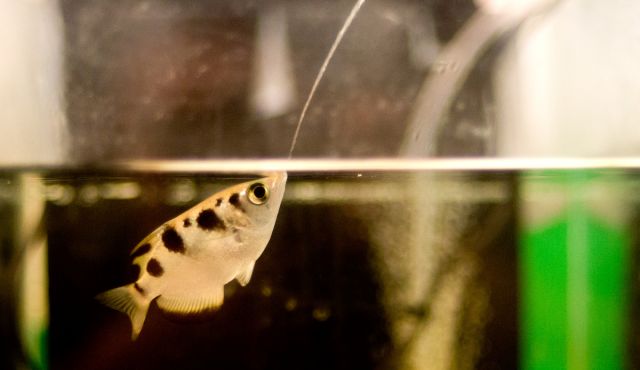
BGU Scientists Have an Epiphany About How Fish Fish
BGU Scientists Have an Epiphany About How Fish Fish
March 27, 2015
Haaretz — A multidisciplinary team of researchers at BGU discovered that archer fish perform visual searching for prey much the way you do. Their resultant speculation: “Pop-out” target searching mechanisms in the brain that had been thought to be unique to mammals exist in all vertebrates.
The team includes Prof. Ronen Segev and Ph.D. student Mor Ben-Tov from the Department of Life Sciences, Prof. Opher Donchin from the Department of Biomedical Engineering and Prof. Ohad Ben-Shahar from the Department of Computer Sciences.
When scanning the environment, say for a tasty fly, or our specific car in a parking lot, we look around us and our brains can isolate the target from the busy background, or as the scientists put it, the target “pops out.”
Or, think of yourself trying to find the kid on a playground: you scan, and then when you see the child, it “pops out” against the background, which recedes into an uninteresting blur.
We do this by identifying unique visual features of our target – fly, car, offspring, the crocodile lurking in the water that wants to eat us. And the sooner the better.
It had been known that in mammals, the desirability of fast visual search led to the development of a capability, to scan the scene in a “parallel fashion” – our brains process the entire visual scene, rather than processing each object one at a time.
Brain scientists call this ability “pop-out visual search,” but hadn’t realized that it evidently began to evolve way before the first mammal quaked at the dinosaurs – since it has now been found in archer fish.
The belief is that pop-out search, or the ability to quickly identify a target, originates in an area in the cortex that identifies the location that differs the most from neighboring ones, explain the scientists in a statement following publication of their paper, “Pop-out in visual search of moving targets in the archer fish”, which was recently published in the journal Nature.
And how does the archer fish learn – and it does – to distinguish between artificial targets presented on a computer monitor in an experimental setting?
The BGU team shows that the archer fish uses pop-out visual search to find its moving targets and aim its watery firepower [spit] at them. What it sees is an object moving faster than others on the screen, say the scientists – an ability not affected by the number of objects in the display, which is an indicator for pop-out ability.
And thus the researchers concluded that pop-out search ability isn’t just an artifact of advanced apes such as we, but of all vertebrates, including the less advanced ones such as fish.




